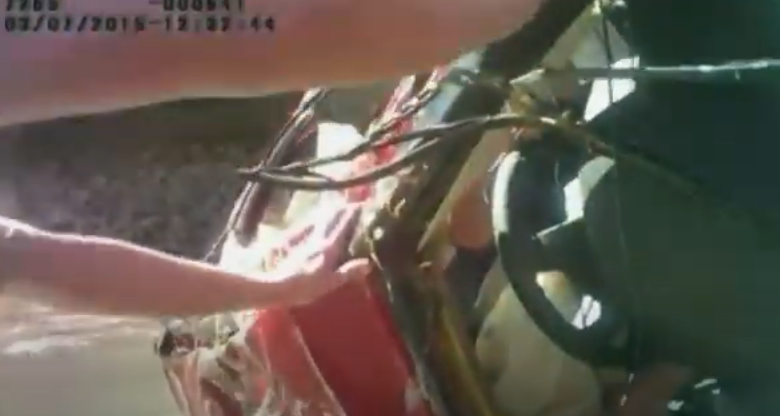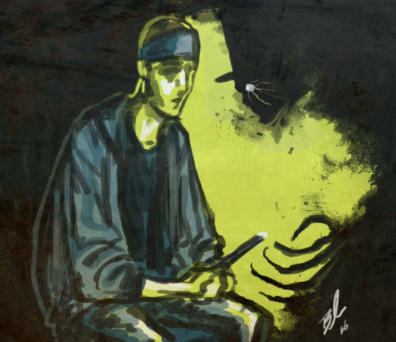Bélmez Faces
One of the Belmez Faces.
In 1971, strange stains in the shape of human faces started appearing on the kitchen floor of a house in Bélmez de La Moraleda, a little village in Andalusia, Spain.
The Story of the Bélmez Faces
Another Belmez Face
Back in August 1971, María Gómez Cámara noticed a weird stain forming on her kitchen floor. It soon transformed into a creepy face, and to her surprise, the stain seemed to move around.
María tried to remove it, but nothing worked. Her husband and son even tried destroying it with a pick-axe and re-cementing the floor, but it came back a week later, along with more faces.
News of the "house of faces" spread quickly, attracting many curious visitors who wanted to witness this mysterious phenomenon for themselves. Parapsychology experts arrived and considered it a great mystery. They even claimed to have recorded strange voices in the house.
A local urban legend began to spread claiming that skeletons were found buried under the floor during an investigation.
Eventually, a new floor was made, and people thought the faces were gone for good. However, just two weeks later, a different face started appearing, surprising everyone once again.
By Easter of 1972, a large number of people were visiting the house to witness the faces. The Pereira family continued to claim that new faces kept appearing for the next 30 years. These faces were of both men and women, and they varied in shapes, sizes, and expressions.
Investigations into the Belmez Faces
The main researchers involved in the Bélmez case were Hans Bender and Germán de Argumosa. They worked together in Bélmez and Freiburg in the early 1970s when the alleged phenomena began. Surprisingly, neither Bender nor de Argumosa published an official report on their findings.
Bender only mentioned the case briefly in his journal, Zeitschrift für Parapsychologie. He did make some references to the case in his lectures, particularly mentioning the sealing of certain areas of the floor where faces were forming, using transparent plastic material. He stated that slight changes in the faces' appearance during this sealed period, as documented by a notary, supported their paranormal origin.
In 2014, a TV show called Cuarto Milenio, hosted by Iker Jiménez, conducted a technical analysis to investigate the possibility of a hoax related to the Bélmez faces. The research was carried out by José Javier Gracenea, a chemical engineering doctor and general manager of Medco, along with Luis Alamancos, a forensic criminalist who served as the chairman of Gabinete Pericial Inpeval and director of the Spanish Institute of Applied Criminalistics. Alamancos was later honored with the European Police Cross of Honor.
With the permission of the house owner, Gracenea collected samples from the faces and analyzed them. His conclusion was that the images "were not created with paint" and that there was no evidence of external manipulation or added elements based on scientific knowledge and analysis techniques.
Alamancos attempted to replicate similar images using various methods that had been considered valid in previous investigations, including concrete solvents, hydrochloric acid, and silver nitrate. However, he failed to reproduce the faces and concluded that he was utterly perplexed by the phenomenon.
Skepticism about the Belmez Faces
According to skeptical investigator Joe Nickell, the Bélmez Faces were intentionally fabricated, and he believes that the faces had a very unprofessional and amateurish appearance in their design.
Similarly, Brian Dunning from Skeptoid has written that investigations revealed the faces were actually painted onto the concrete floor, initially using paint and later with acid. Dunning also suggests that the woman residing in the house was involved in perpetrating a hoax on the public, potentially for financial gain.
In a journal article published in July 1993, Luis Ruiz-Noguez discussed the presence of three pigments commonly used in paint manufacturing: zinc, lead, and chromium. Based on this, Ruiz-Noguez suggested that the use of paint should be considered when it comes to the Bélmez faces, particularly with the suspicion of lead being involved. Here are the reasons he provided:
Lead was commonly used as a pigment for primary colors for a long time.
The analysis showed that the amount of chromium present was too low to be a likely option.
Lead tends to create dark and hard-to-see colorations, unlike chromium.
The most common and inexpensive primary colors are enamels that contain lead, which are widely used in homes because they are easy to apply.
However, Ruiz-Noguez also mentioned some objections to the hypothesis of paint being used based on the ICV (inorganic chemical values) samples. These objections include the fact that alkydalic-type enamels are not resistant to abrasion, paint leaves a visible film that is easily distinguishable from the surface it is applied on, and alkydalic enamels have low chemical tolerance to acids, alkalis, and detergents.
What do you think caused the faces to appear in Belmez? Let us know in the comments.
If you enjoyed learning about the Belmez Faces you might also be interested in other ghostly faces such as the SS Watertown Ghost Faces or faces appearing in an airplane oven on Flight 401.
































